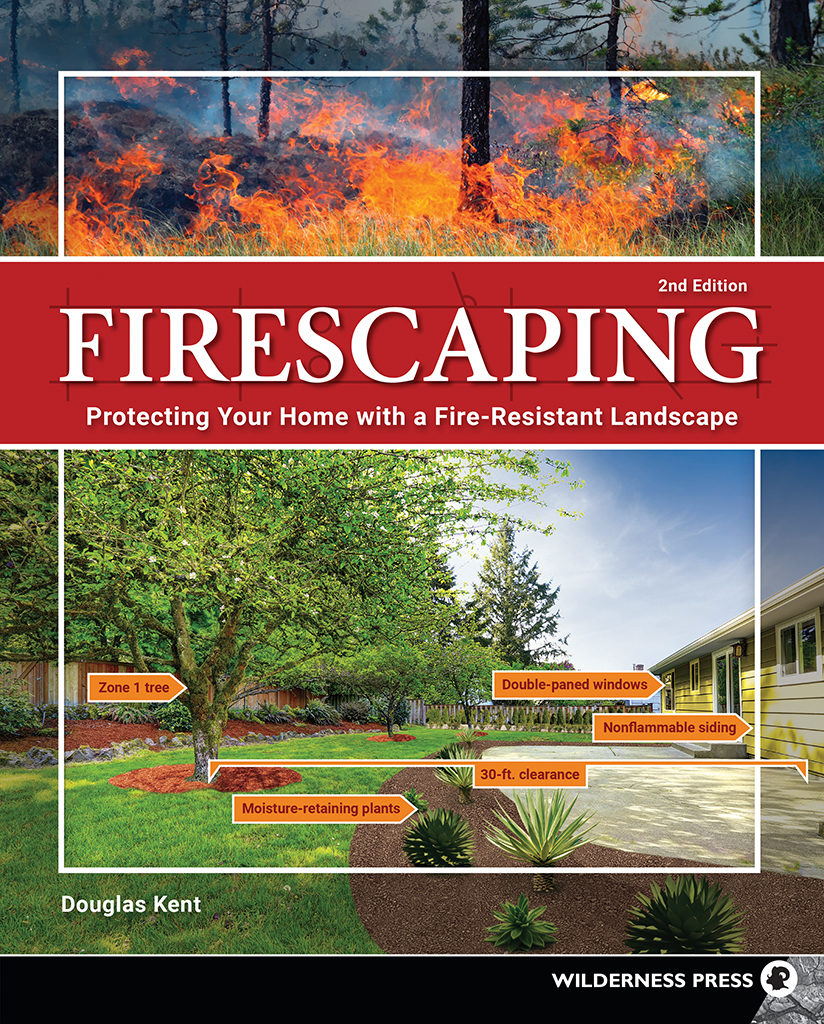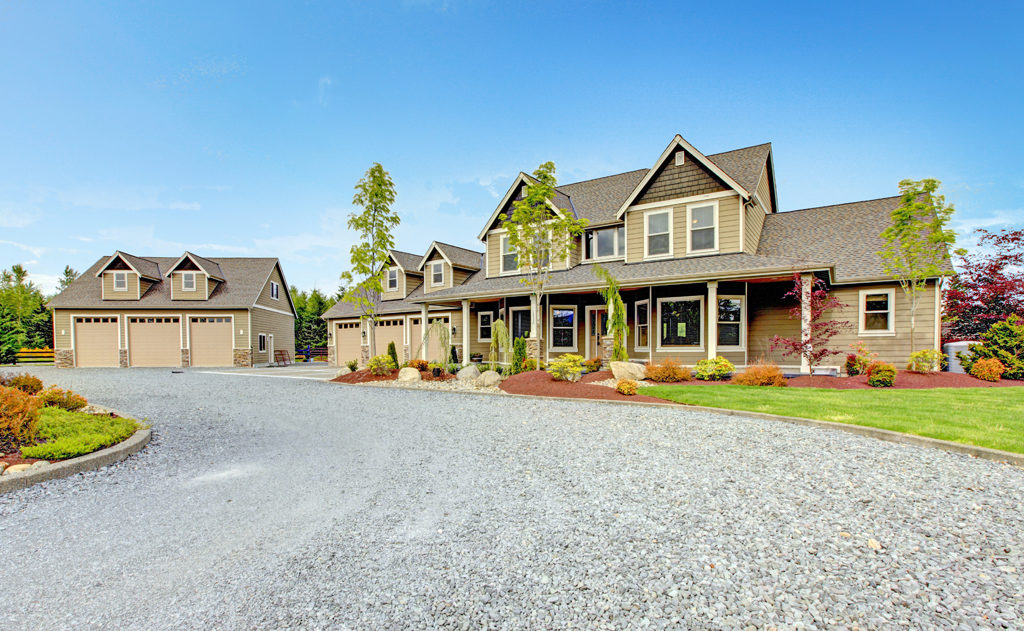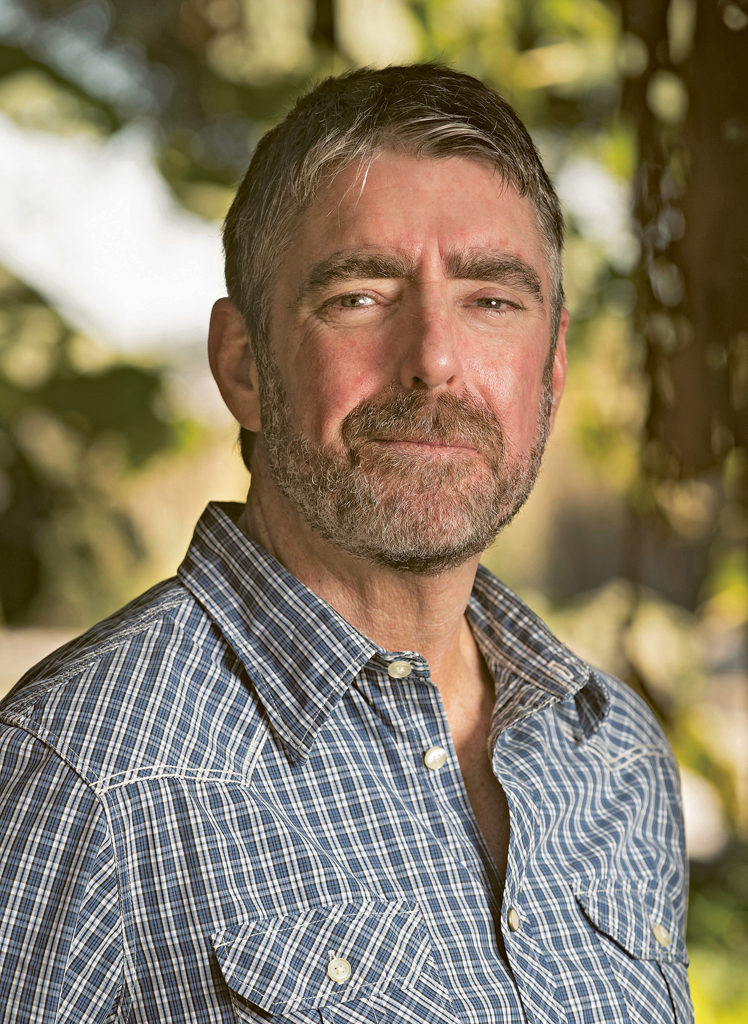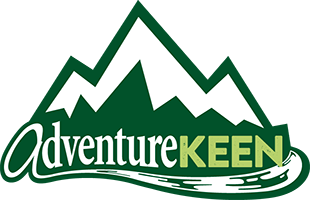New Guide Teaches the Essentials of Creating Fire-Resistant Properties

The landscape is charred and murky. The horizon is torn by jet-black, leafless trees. The surrounding shrubs have burned to ash. Chimneys and large piles of soot are all that remain of the neighborhood homes—all but one.
In the midst of the wildfire’s destructive wake, a lone house stands. Its walls are a grayish and sticky black, and the ground around it is singed. Yet the home and everything within it have been saved. Some say it’s a miracle. Others call it luck. It is neither. The property was protected by careful planning and the implementation of a strategic fire-resistant landscape. The property was saved by firescaping.
In the new edition of Firescaping (October 2019, Wilderness Press), horticultural expert Douglas Kent shares secrets, tricks, and simple instructions that can help readers’ homes survive a wildfire. The practical, full-color guide introduces design and maintenance guidelines developed by dedicated scientists and firescaping professionals. It shares actionable strategies for reducing a property’s fire hazard, a practice the author is passionate about.
“Scientists, fire professionals, and ecologists such as myself now believe the worst is still ahead,” says Douglas. “Megafires, firestorms, and fire tornados are becoming a yearly phenomenon.”
Douglas has been on the front lines of many fires. Since 2005, he has toured, worked with, and spoken to fire-scarred communities throughout California. His book is invaluable for homeowners, landscaping professionals, and community fire prevention officials across the country.
“There are more than 46 million homes representing a population of more than 100 million in high fire hazard areas in the United States,” Douglas notes. “Sixty percent of all new homes are being built in fire country.”
Firescaping provides in-depth information about the various aspects of wildfire safety. For individuals, it delves into landscaping techniques, home defense against flying embers, and recommendations for everything from plants to driveways. For neighborhoods and communities, the book discusses such important considerations as road conditions, vegetation management, and recovery efforts after a wildfire passes.

“I hope everyone—homeowners and contractors, students and advocates—uses this book as a starting point for their journey toward personal safety,” Douglas says. “We can create safety. We just need to roll up our sleeves and get to it.”
Firescaping ($21.95, paperback) is available wherever books are sold, including bookstores, gift shops, and online retailers.

About the Author
Douglas Kent’s love affair with landscaping spans decades. He is an expert in ecological land management (ELM), the practice of designing and maintaining landscapes for specific environmental outcomes, such as carbon reduction, pollinator attraction, or waterbody protection. He has taught aspects of land management at the Center for Regenerative Studies at California Polytechnic State University, Pomona, since 2008.
Douglas manages an ELM business with clients across California. The business has helped Douglas run four statewide education campaigns and participate in hundreds of landscape projects. His work has been featured in the Los Angeles Times, Fine Gardening, Sunset Magazine, and National Wildlife, as well as on HGTV and CNN Comcast. He has also written six other books on sustainable gardening practices.


